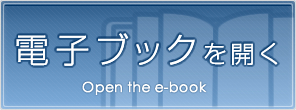For the Safety Navigation In Japanese Coastal Waters page 14/120
このページは For the Safety Navigation In Japanese Coastal Waters の電子ブックに掲載されている14ページの概要です。
秒後に電子ブックの対象ページへ移動します。
「電子ブックを開く」をクリックすると今すぐ対象ページへ移動します。
概要:
- 10 -(1)Kuroshio CurrentThe Kuroshio Current or the Black Current (refer to Fig. 1-10) is also called the JapanCurrent. It is the largest ocean current in Japanese waters, and the only current.The Ku....
- 10 -(1)Kuroshio CurrentThe Kuroshio Current or the Black Current (refer to Fig. 1-10) is also called the JapanCurrent. It is the largest ocean current in Japanese waters, and the only current.The Kuroshio Current is a high-temperature, high-salinity warm current that is dark bluecolor as is implied by its name and has a transparency of more than 30 metres. Its flow rateis 2 to 3 kn on the average and reaches up to 4 to 5 kn, and its watercourse changes moreviolently in direction than is usually anticipated. It is always important to pay attention tothe movement of the Kuroshio Current as it has a great influence on navigation. Navigatorsare required to take notice not only of information as to the passage of current, surfacetemperature, and flow rate of the Kuroshio Current summarized below, but also of the latestinformation provided by the Maritime Safety Agency with regard to ocean current reports,etc.〔Passage of the current〕The source of the Kuroshio Current is east of the Philippine Ils., where the NorthEquatorial Current separates north and south and where the northward branch then flowsnorthward off Luzon. The Kuroshio Current then passes through the sea area betweenTaiwan and Yonakuni-jima Island, and flows into the East China Sea. It then advancesnorthward along the outer edge of the continental shelf and passes through Tobara Kaikyo tothe South Sea area of Japan. Part of the Kuroshio Current branches off from the maincurrent in the sea area east of Taiwan and flows eastward to turn into a subtropicalcountercurrent. Part of the upper stream of the Kuroshio Current branches off from the maincurrent in the sea area west of Okinawa, advances northward along the west of Kyushu, andflows into the Japan Sea through Tsushima Kaikyo to become the Tsushima Ocean Current.The Kuroshio Current in the South Sea area of Japan generally approaches the south shoreof Honshu (main island of Japan), flows eastward, advances away from the east coast ofKanto, and turns into a current flowing eastward in the eastern sea area of Honshu. Thiscurrent is called the Kuroshio extension to distinguish it from the Kuroshio Current.〔Changes in the passage of the current and formation of cold water mass〕The Kuroshio Current in the South Sea area of Japan generally flows eastward orsoutheastward along the south shore of Honshu. Frequently, however, it is caused tomeander in the vicinity of Enshu Nada by a cold water mass formed inside the KuroshioCurrent. The meanders of the Kuroshio Current can be classified into type A or a large-scalemeander and types N, B, C, and D according to the site and scale of the cold water massformed inside. (See Fig. 1-11)

